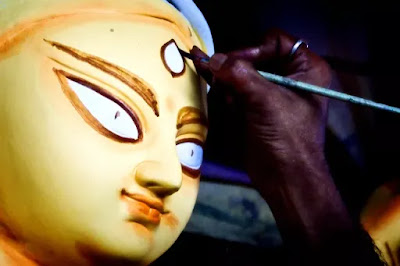Let's be clear: doing yoga or meditating is not going to cause you to suddenly sprout another eye. The third eye is part of what is called "the subtle body," which means that while it can't be seen, it's an important force in governing how prana (energy) moves within the body. Some yoga practitioners choose to embrace the idea of the subtle body and find that it helps them stay balanced, healthy, and happy.
Other people find that this approach doesn't make sense to them or is too esoteric. Both types of yoga students can still benefit a lot from the physical practice of yoga, even though they may come to it from different angles.
So Where Is This Third Eye?
Your third eye is located in the center of your forehead. It is the site of the ajna chakra, which is associated with light, perception, and intuition. Chakras can become unbalanced when they are blocked, which may cause a person to feel like the areas influenced by that chakra are not working properly.
Meditation and yoga are prescribed to remove the blockage. When meditating, make the third eye your focal point. You can use it as a drishti by turning your eyeballs toward it with the eyes open or closed. Or you can just concentrate on the center of the forehead while repeating the mantra "om" (the seed syllable associated with the ajna chakra) either in your mind or out loud.
Poses for the Third Eye:
Yoga poses that stimulate the forehead can also be useful. Child's pose is a good choice because it is done with the forehead on the floor. Because it's a resting position, you can stay in it for several minutes if you want to. The forward bending variation of pigeon is also a pose where you can stay for a while.
If your forehead doesn't come to the floor, put a block under it so that it has something to rest on. Ajna chakra also comes into contact with the floor when you are preparing for prone positions like low cobra and locust. Though these preparatory positions are usually transitory, you can choose to linger in them if you want to.
Seated forward bends also offer the opportunity to bring the third eye to the floor. If your forehead doesn't quite make it there, use a block under it for support. Try upavistha konasana and baddha konasana this way. In paschimottanasana, put the block on your legs.
For standing poses, try eagle, in which you can bring your thumb to your third eye as you forward bend. In fact, you can bring the arm position from eagle into a number of other poses. It works well and allows you to make contact with the third eye in warrior III, humble warrior, and cow face pose, for example.
Content & Image Courtesy: https://www.verywellfit.com/what-is-the-third-eye-3566789


No comments:
Post a Comment